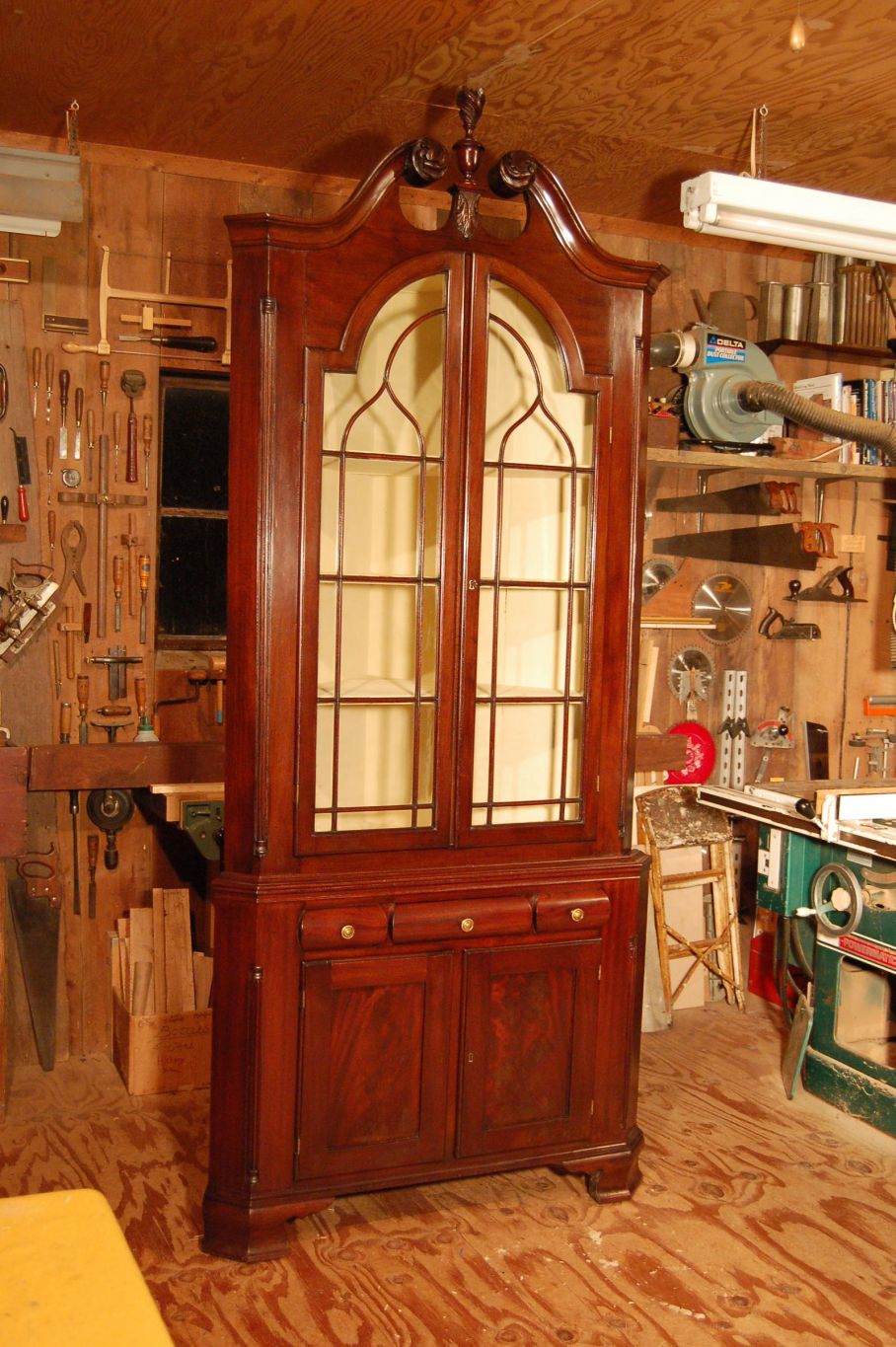Soon I began repairs to the doors. The glass appeared to be original – amazing. Much glazing was missing, but I restored it. With other minor repairs, the doors were strong and ready for finish restoration.
Before beginning the exterior finish restoration, considerable thought and study went into deciding the best course for restoring the cabinet interiors. I found that the near-black finish wasn’t original, that the original was a warm buttermilk color milk paint. Apparently, only the inside of the top cabinet was painted originally.
Later, along with the top, the bottom cabinet also got the near black treatment. The near black finish appears to have been a varnish glaze, which presented problems for over coating. There had only been 3 finishes, so stripping was unnecessary. The glaze also ruled out re coating it with milk paint. The conservator’s goal of reversibility led to finishing with latex paint – reversible, good adhesion to previous finishes – and a good visual match for the milk paint. I matched the original color and sheen. Once repainted, the interior color nicely complimented the warm mahogany exterior.
Exterior Finish Restoration
Restoring the exterior finish began with the base cabinet. The considerable repairs required a good bit of touch up, but the finish wasn’t fire-damaged, so it mainly required only cleaning, touch up, and a coat of linseed oil.
The veneered mahogany doors though, had severe alligatoring which required a re-bonding coat of wood alcohol, followed by vigorous restorative hand-rubbing with amalgamator. A coat of linseed oil put it over the top to happy. That is, the gorgeous figured mahogany was able to shine through again.
It was time at last to begin restoring the exterior finish of the top case, some of which had the most fire damage.
The severe “pebbling” of the original shellac finish, combined with areas of cracked or alligatored finish, while other areas were perfectly smooth, had me stumped. Further, it was worse on the carvings and moldings – the hardest to restore. I sought counsel from several experienced craftsmen, including some of the best in the field. Most had suggestions, but none were sure. I’d have to just dive in.
I tried several things but none were extreme enough, with sufficient controllability. When I tried sanding a small, obscure area with 400, then 320 grit finishing sandpaper, I found it tamed the pebbling without removing too much color or patina. With a careful touch – it worked. Combined with a couple of other steps using a mix of techniques and materials, taking care to only bring it back appropriately for its age, as though it had always been well cared for, the finish was gloriously restored. It was thrilling to see it come back to life.
Last of all was to restore the finish on the two glass doors. Here the fire-caused pebbling was particularly extensive, but I knew what to do and kept at it until they were done.
All that remained was to put everything back together, make sure doors and drawer worked properly, locks worked, etc. Once back together, it was one of the most elegant, visually impressive pieces I’d ever seen. To see such a stunning transformation was a highlight of my career.

















 or.
or.



















































